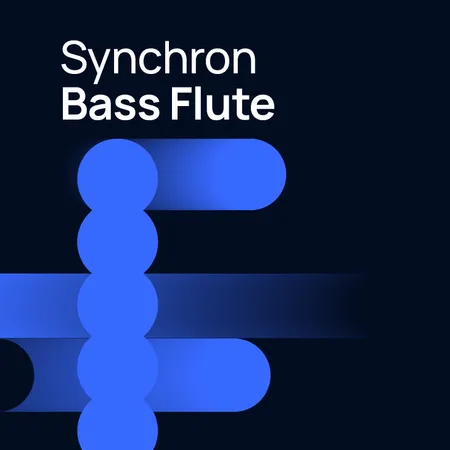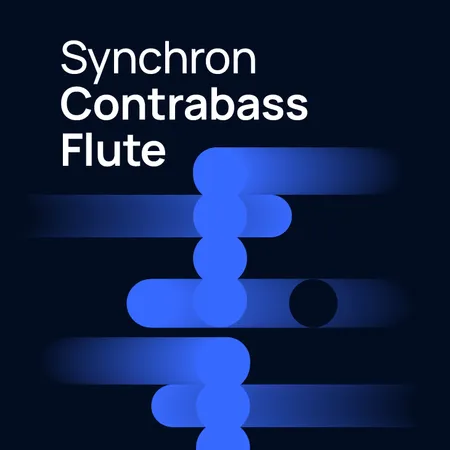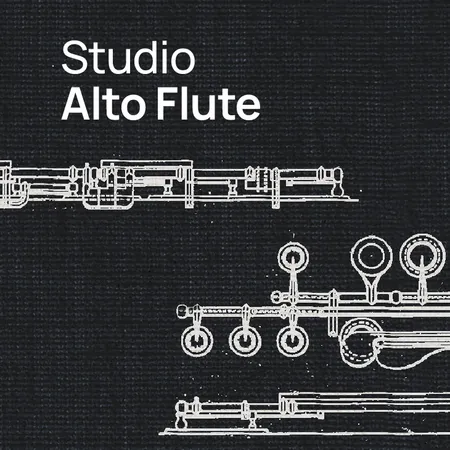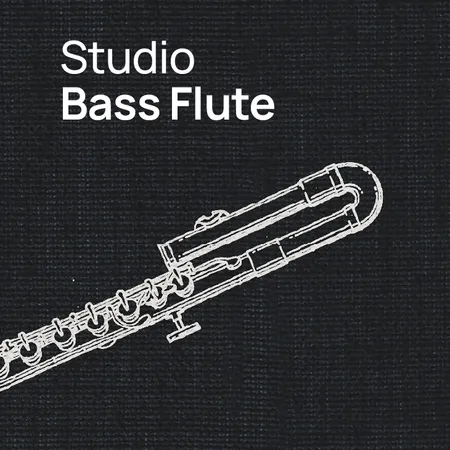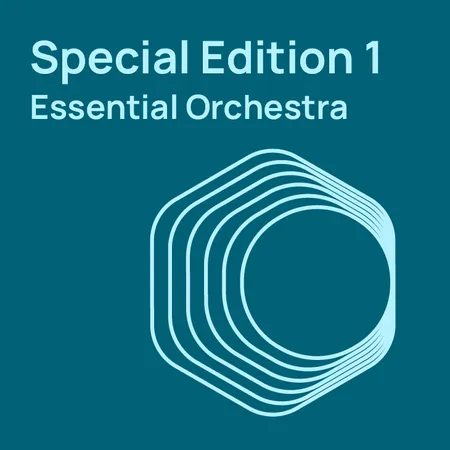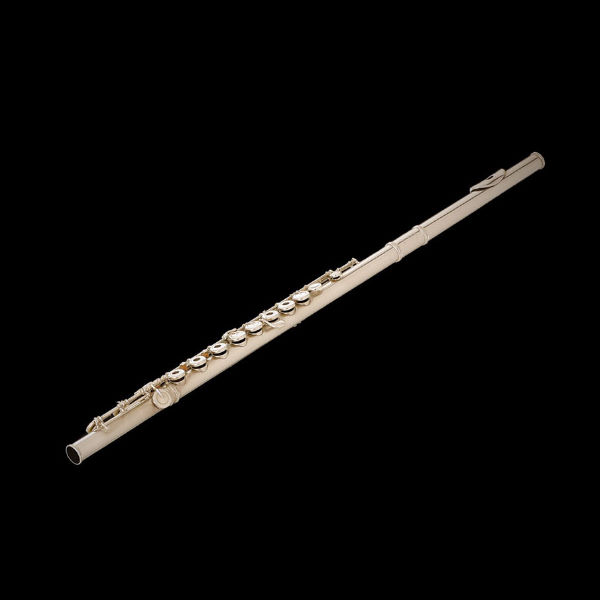
Name: Flute, concert flute
Spelling
German: Große Flöte, Querflöte
French: flute (traversière)
Italian: flauto (traverso)
Classification: Aerophone, edge-tone instrument without fipple, woodwind instrument
Material: Silver, nickel silver, gold, platinum (less usually grenadilla, coco wood or a combination of wood and metal)
Embouchure: Rectangular with rounded corners
Tubing: Length 67-68 cm, mostly cylindrical, straight
Bore: Medium, inner diameter approx. 19 mm
Keys/finger-holes: Boehm mechanism; Open keys (French model)
The concert flute is an edge-tone instrument and consists of three pieces of tubing: the headjoint, middle joint (body) and footjoint.
The lip plate and embouchure are set in the conical headjoint. If the embouchure is set on a little plateau it is known as a reform embouchure. This slight elevation facilitates attack, which makes it especially popular with beginners. The upper end of the headjoint is closed by the stopper, which is movable and enables slight adjustments to intonation.
The cylindrical body contains most of the tone holes and the keywork. Pulling apart the headjoint and body has the effect of a tuning slide: the overall tuning of the instrument can be lowered by about an eighth tone.
The footjoint, a short cylindrical piece of tubing at the lower end of the flute, contains the tone holes for the lowest notes. The C footjoint is standard; with this notes from Eb4 to C4 can be played. By replacing it with a B footjoint B3 becomes playable as well.
The modern orchestra or concert flute features the Boehm key mechanism and possesses either open or closed keys. On models with closed keys, all the keys have cups fitted with pads of felt and gut. These pads are the instrument's Achilles' heel; they are extremely sensitive to changes in temperature and dryness and are quick to shrink, which means they no longer make the tone holes entirely airtight.
The open-keyed flute is also known as the French model or ring keyed flute. Five of the keys on this flute are perforated. The corresponding tone holes are therefore not covered by cups but by the flutist's fingertips, which enables more effective control of timbre. Many flutists prefer to perform contemporary works on the open flute because it is better suited to modern playing techniques such as glissandi and quarter tones.
In keeping with the trend for using original instrumentation for the performance of historical pieces, wooden flutes in the baroque and classical styles are once again being made in larger numbers. When it comes to the influence of the material - wood or metal - on the timbre and response, opinions differ widely. Scientific studies have shown that it is of little significance; a wooden flute can sound just as “bright" as a sterling silver one.
Today there is a very clear movement toward international standardization of flute-playing style. Since the 1940s the French school with its ideal of a full and brilliant sound with vibrato has, quite literally, set the tone.
Discover our Flutes
The flute is one of the oldest musical instruments of all and is regarded as the first ever wind instrument. It has been in use at least since the Stone Age.
Flute playing has a particularly long tradition in the Orient. The Sumerians and Egyptians were among the first to add three or four finger-holes to their bamboo flutes, which enabled them to produce several notes.
The Ancient Greeks also had quite sophisticated flutes, which were blown at the open upper end and had six finger-holes. However, the flute was regarded as an instrument of the common man and as such was held in scant regard. In contrast, the aulos , a distant precursor of the oboe, was always associated with high social standing.
The flutes used in today's orchestras are transverse flutes, as opposed to the Greeks' end-blown flutes and the (modern) recorder. The first evidence of the use of transverse flutes in Europe comes from Etruscan iconographs from the 4th to the 1st centuries BC. Side-blown flutes were also known to the Romans.
Between the fall of Rome and the 11th century no evidence is known to exist for the use of transverse flutes. It is probable that the instrument returned to the West from the Orient by way of the Byzantine Empire. The transverse flute of the Middle Ages was made of a single piece of wood and had six finger-holes. It was used in military contexts and was even played at court. Traveling minstrels acquainted their audiences with it all over Europe, and since they originally came from Germany the instrument also became known as the fistula Germanica. It was usually accompanied by a drum.
In the 16th century the flute consort, an ensemble consisting of three different-sized transverse flutes, became an established part of musical practice. At the same time broken consorts, ensembles combining various instruments such as the viol, lute and flute, were also popular.
The most common flute was in D and had a range of D4-D6 (which could be extended if the player was skillful enough). Since the instrument was tuned to D the notes of other keys could only be produced either by half covering the finger-holes or by using cross-fingerings. This gave the instrument a certain chromaticism but meant that intonation remained uncertain, which placed the flute at a disadvantage compared to the other woodwinds.
From the middle of the 17th century the flute underwent several sweeping changes. From 1660 onward it consisted of three separate parts: the cylindrical headjoint, the body with six finger-holes, and the footjoint. The body and footjoint were conical. An additional hole was added to the footjoint and fitted with a key to make D# playable. These innovations, which probably originated from the Hotteterres, a French flute-making family, represent the start of the development of the transverse flute as we know it.
In 1681 a Hotteterre flute with a range of 2½ octaves (D4-G6) was used in Jean-Baptiste Lully's (1632-1687) opera orchestra, its first appearance in an orchestra of this type. Its wide range and brilliant timbre meant that the transverse flute soon became a serious rival to the recorder.
The recorder (or fistula Anglica), an end-blown instrument, had originated in England and gained popularity in Europe at the same time as the transverse flute, becoming established as an orchestral instrument. But from the middle of the 18th century the description flauto in musical scores no longer referred to the end-blown recorder but the transverse flute (which had hitherto been described as the flauto traverso).
The sound quality of the baroque transverse flute was still far from homogeneous and consistent, however. The irregularities in its range and the subsidiary notes which resulted from the use of cross-fingerings and had a different timbre were felt to be irksome in modulations. If it was possible to compensate for the shortcomings of the baroque flute's intonation then only by means of exceptional virtuosity.
The common practice of changing the body only accentuated these problems; to achieve a different tuning it had become customary to insert either a longer or shorter body, but no change was made to the arrangement of the finger-holes, which would have been necessary to accommodate the instrument's altered acoustic properties. The introduction of the exchangeable body is attributed to the virtuoso flutist Pierre Gabriel Buffardin (ca. 1690-1768).
Efforts to improve the transverse flute soon spread from France to other countries. The Prussian flutist and composer Johann J. Quantz (1697-1773), Frederick the Great's flute teacher, studied the intonation problems of the instrument in great detail, later becoming a flute maker himself. He invented the tuning slide, experimented with various shapes and sizes of tone hole and added another key. These improvements, along with his treatise “Versuch einer Anweisung, die Flöte traversiere zu spielen" (An Essay on Instruction in the Art of Playing the Transverse Flute), published in Berlin in 1752, and his approximately 400 compositions for the instrument (chiefly concertos for flute and strings) boosted its popularity and brought it to the attention of ever more composers.
By the end of the 18th century the transverse flute had firmly established itself as an orchestral instrument. Conversely, it had steadily lost importance as a solo and chamber music instrument from the 1750s onward. Many composers were of the opinion that the flute was no longer able to cope with the latest harmonic and formal developments; in addition, the shift of the audience from courtly to bourgeois circles - and thus from small, intimate rooms to large concert halls - resulted in the advent of an entirely new sound ideal, which required, among other things, a more powerful sound.
But despite permanent attempts to improve the transverse flute's sound and structure it proved quite impossible to achieve anything like a standard form until well into the 19th century.
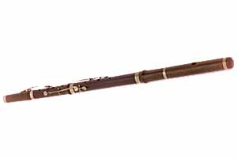
Traverse flute, France, 19th century (Musikinstrumentenmuseum Schloss Kremsegg, Austria, Collection Streitwieser)
In the mid-18th century instrument makers in London added three more keys, thus rendering cross-fingerings virtually obsolete. In addition they reintroduced the C footjoint, which had already been in use at the beginning of the century. These changes signaled the start of a period during which the transverse flute was equipped with an ever larger number of keys.
At the turn of the 19th century, instruments with eight keys were standard, the first such flute being devised by the flutist Johann G. Tromlitz (1726-1805). Flutes with more than eight or nine keys were the exception rather than the rule. The keys did not do much to improve the sound quality, and led to more complicated fingerings into the bargain.
It was not until 1830 that a solution appeared to be on the way at last. The flutist of the court orchestra in Munich, Theobald Boehm (1794-1881), began to develop a new and comprehensive concept for the construction of flutes. Inspired by the attempts made by some of his peers to redesign the instrument, he began an intensive study of the key work and the size and shape of the tone holes. He also incorporated the ideas of other flute makers into his work, especially the ring keys patented in 1808 by Reverend Frederick Nolan and the principle of attaining a more powerful sound by means of larger tone holes, an idea that Tromlitz had already experimented with.
In 1832 Boehm constructed a transverse flute with tone holes which, for the first time, were arranged according to acoustic criteria rather than ease of fingering; these criteria were based on his own arithmetical calculations and experiments. In addition he created an entirely new key work, linking the keys by means of movable axles. The Boehm mechanism required a new fingering, but this actually proved to be less complicated than previous fingerings.
In 1847 Boehm presented an improved flute with cylindrical tubing and a parabolically conical headjoint - a revolution in instrument-making of the time.
The new flute also included an improved key work which featured the pin springs patented in 1839 by Louis-Auguste Buffet. Boehm added felt pads to the key cups to prevent the escape of air. He changed the shape of the embouchure, which hitherto had been oval or round, to a rectangle with rounded corners. The material he chose was German silver, to which he ascribed the best acoustic properties.
The Boehm flute was received with enthusiasm in France, England and the USA. It was awarded many prizes, including one at the World Exhibition in Paris in 1855. In Boehm's home country, however, his instrument was greeted with a good deal of skepticism, a feeling echoed in Italy and Russia. These misgivings were due mainly to the new fingering, which flutists in these three countries were reluctant to accept. One prominent opponent of the Boehm flute was Richard Wagner, who described it disparagingly as a “blunderbuss", presumably on account of its unusually powerful sound. Several instrument makers subsequently tried to make a model to rival the Boehm flute, but it was the latter's form that ultimately gained general acceptance.
Modern flutes are still made using the Boehm mechanism, which underwent only very slight modifications and improvements during the 19th and 20th centuries.
Once a technically complete flute with a satisfactory timbre had established itself, the amount of solo literature for the instrument increased dramatically. Composers began to explore the limits of the instrument, and experiments with different tone colors and means of articulation resulted in a whole new palette of playing techniques.
The concert flute in C is a non-transposing instrument notated in treble clef.
In the high register composers sometimes explicitly require harmonics: these are notes produced by overblowing to the 4th natural instead of in the usual way with special fingerings. Harmonics are written with a ring above the note.
The concert flute's standard range is from B3 - D7 (forced up to F7).
In modern compositions microtones, for instance quarter tones, are called for. These can be played with ease using special fingerings.
A table of fingerings can be found in Robert Dick's book “The Other Flute" (Multiple Breath Music Company, 1989). This book also contains a table of fingerings for a microtonal scale from Db4-G#6, which consists of 210 steps.
Sound is produced on the flute by blowing: the flutist blows through the mouth hole (embouchure hole) and the stream of air that makes contact with the edge is cyclically directed outward and inward. This cyclically vibrating air stream is the sound generator and excites cyclic vibrations of the air column inside the flute's cylindrical tube. The flutist uses tone holes and keys to shorten the vibrating air column, thus producing an increase in pitch. The sound is projected through the open lower end and the open keys.
It is the flutist's lips that play the most important role; attack on the flute is highly individual. The shape of the lips, the position of the upper lip in relation to the lower lip, angle of the embouchure etc. are all decisive factors in intonation. There are so many flutists, so many different embouchures and consequently so many different means of expression.
Blowing strongly results in a higher pitch than blowing softly; this is true of all flutes. The flutist compensates for these differences by means of the embouchure.
It is primarily the keywork that is used for sound production, whereas the technique of overblowing, so important on brass instruments, plays only a subordinate role on the flute. This means that flutists mainly use naturals 1 and 2 and only rarely naturals 3 and 4.
With the aid of the keys the notes from B3-D5 are played starting from the fundamental (1st natural). The footjoint is detachable; the C footjoint is standard and contains the tone holes for the low notes from Eb4 to C4. By replacing it with a B footjoint B3 becomes playable as well (although the higher notes do not respond so well on this footjoint).
By overblowing to the 2nd natural (octave) the range Eb5-D6 becomes available:
The high notes are generally produced by means of special fingerings rather than by overblowing. Exceptions are made in difficult passages, however, where it is not unusual for the notes D6 through A6 to be produced by overblowing to the 3rd natural (twelfth).
The harmonics which are less often called for can be played by overblowing to the 4th natural (2 octaves above the fundamental). These notes (from B5-A6) sound almost exactly the same as the regular piano or pianissimo notes.
D7 requires a forced attack, while the notes above it as far as F7 can only be produced with extreme force and are therefore not called for in orchestral literature.
The flute is an extremely agile instrument which allows staccato and legato playing at the fastest tempi. It is also ideally suited for fast arpeggios as well as chromatic and diatonic scales, leaps, tremolos and trills.
The changeover from staccato to legato notes is especially characteristic of the flute.
The flutist articulates the syllable da (also de, di, du), moving only the tongue; the lips and cheeks remain immobile. The harder, more accentuated version is ta (te, ti, tu), the softer uses the letter K or G. Slow to medium fast tempo.
Alternating articulation between ta and da is also used.
Microtonal fluctuations in pitch and/or volume which are produced by movements of the diaphragm, larynx and lips. Opinions in the various schools differ as to which of these three factors is the most important for the production of an ideal vibrato.
Sforzando
Forced, short attack followed by a rapid reduction in tone intensity.
Sforzandissimo
Forced, short attack with continuance of tone intensity.
Fortepiano
Rapid dynamic reduction from forte to piano.
The flutist articulates the syllables ta-ka, te-ke, tu-ku or similar. For softly articulated passages the syllables da-ga, du-gu or similar are used.
The articulation of the syllables ta-ra, (te-re or similar) produces an effect which seems to simulate the bowing of a violin and is used for greater clarity of accentuated notes.
The flutist articulates the syllables te-ke-te, ta-ka-ta, tu-ku-tu or similar. Softer version: de-ge-de, da-ga-da or du-gu-du.
Can be performed in two ways:
By articulating a rolled R, which produces a rapid tremolo.
By articulating a guttural R (as when gargling). This method is better suited for quiet and soft passages, since the noise level is lower.
The flute is especially well suited for the performance of trills. Every minor and major trill from D4 to B6 can be played with ease. Lower trills are difficult, being played with the little finger.
Tremolos are easy to play on the flute with the exception of those at the highest and lowest pitches. Tremolos (and trills) in the low register, which are produced with the aid of the little finger key, are harder to play. In the upper register tremolos over a fourth as far as A5/D6 and tremolos over a major third to Eb6/G6 can be performed with ease.
Glissando is not a playing technique typical of the flute since the keywork is not well-suited to sliding transitions.
Glissandi can be performed very smoothly on the open flute by uncovering the tone holes and rings of the open keys in one smooth movement.
Glissando effects can also be achieved by fleeting fingering and sliding attack which produces tonal distortions.
Modern flute works require sliding between pitches. Such glissando effects are achieved by altering the position of the lips, turning the mouth hole inward or outward and/or delayed closing of the keys.
Multiphonics describes a modern technique of fingering and attack which makes it possible to play two or more notes simultaneously. However, it is exceedingly difficult to produce more than three notes at once.
The flutist attacks in such a way that a partial (or several partials) of the fingered note sound as well, or that only the partials sound. To achieve this, the lips are opened more widely than the usual embouchure and the stream of air is wider. It is easier to produce large intervals than small ones: multiphonics an octave apart (fundamental tone + 1st partial) are therefore the easiest to play. When playing multiphonics a fifth apart (fundamental + octave + fifth) the fundamental may sound as well; when playing multiphonics a third apart (octave + third) the fundamental no longer sounds.
Special fingerings in the 3rd octave are especially apt to produce multiphonics with intervals outside the harmonic series as well. Because the resulting sound may differ from flute to flute it is not possible to tell with any certainty beforehand exactly what it will sound like.
The Italian composer Luciano Berio (1925) was one of the first composers to use multiphonics for solo flute in his “Sequenza I" (1958).
Notation: the required notes (two or more) one above the other.20th century composers such as Edgard Varèse (1883-1965) or Luciano Berio include incidental noises that arise from playing as part of their compositions. For example, they call for the noises made by the flute's keys themselves, writing the slapping of one or more keys explicitly into the score. For a single key-slap the G key is most often used. The resulting pitch depends on the fingering and the angle of the embouchure: if the embouchure hole is open the pitch is higher than if it is closed. If the mouth hole is stopped completely with the tongue during the key-slap the pitch drops (by a large seventh in the B3-C5 area).
This playing technique was first called for in 1936 by Edgard Varèse in his piece for solo flute Density 21.5. The notation is as follows: The key-slap is indicated by a “+"; if a note is to sound at the same time, the “+" is written under the note.
Tongue ram (tongue slap, tongue stop): The abrupt closing of the embouchure hole with the tongue achieves an effect similar to key-slaps with a closed embouchure hole. The resulting resonances sound a major seventh above the fingered note. Notation: T above the note.
If the embouchure hole is open when the tongue click is performed there is an audible residual tone. Notation: a K above the note. If the flutist has the embouchure hole between his lips, the click is accompanied by resonances which range from a major third to an octave below the fingered note. The tongue click in the embouchure hole is indicated by a K above the note.
Turning the flute while playing changes the angle of the embouchure. If the flutist turns the instrument toward his mouth the pitch of a note is lowered by ¼ to ¾ of a tone. Turning it away from the mouth results in an increase of about ¼ of a tone.
If a (skilled!) flutist blows very gently through lips that are only very slightly parted, the individual partials of a note sound. By altering the angle of the embouchure as when overblowing, several partials can be played as whisper tones.
Low notes have the highest number of whisper tones because of the long air column: 14 whisper tones can be produced, starting from B3; the highest whisper tone - C8 - is also the highest of all notes playable on the flute. Notation: “ws." below the note.
Further modern techniques are the breathing of notes, without really attacking them; changes of volume and tone color on a long note; jet whistles, which are produced by closing the embouchure hole completely with the lips; singing and playing simultaneously; circular breathing.
Modern composers often require the piccolo to perform the same playing techniques as the flute. Because of the instrument's small dimensions (resonance chamber, keys, embouchure) the effect of these is reduced, however.
The key slap (key click) sounds much quieter than on the flute.
In the same way percussive tongue effects like the tongue ram (tongue stop) or tongue click over the embouchure is reduced.
Pitch bending (altering pitch within a note by changing the angle of embouchure): only slight increases and decreases of pitch within a note (up to about a quarter tone) are possible owing to the narrow embouchure.
Airy, light, poetic, mellow, bright, wafting, ethereal, rich, soft, graceful, penetrating, brilliant, clear, shrill, silvery, wind-like, whistling, whispering, humming, filigree, sighing, aspirate.
The timbre of the concert flute is homogeneous in all registers with only the very lowest and highest notes exhibiting any different qualities.
Low registerB3 - B4
Because they contain few overtones, the lowest notes can sound rather dull, dry and hollow which gives them a melancholy character.
They are used mostly in solo pieces or in small, carefully-balanced ensembles to prevent them being drowned by other instruments. The overtones of the double-bass in particular superpose the lowest flute notes. It is for this reason that several flutes are used to boost the volume.
Middle registerC5 - B5
In the middle register the flute sounds mellow, light, wafting, bright and rich. These characteristics are often used for solo work. In quiet passages the flute's middle register sounds particularly graceful.
Upper registerC6 - D7
The higher notes possess great brilliance and can sound penetrating and shrill.
They are ideally suited for playing melody lines along with the violins, and are therefore found fulfilling precisely this task in practically every orchestral work.
They are, of course, also used for solo performance.
Like the horn, the flute blends extremely well with all instrument groups. Particularly good blends are achieved with the woodwinds and the strings.
Two flutes in unison sound absolutely homogeneous, as do two flutes doubling an octave apart (whether concert flutes or piccolos).
In order to compensate for the lack of volume in the low register, several flutes are used playing in unison.
The combination of flutes with oboes and clarinets sounds warm and mellow whether played in unison or in octaves.
The flutes are combined with the bassoon either one or even two octaves apart, which produces an exotic effect.
In early cultures the flute played an important role in the realm of magic and was very closely linked to the hereafter and the spirit world with its gods. The instrument is often shown as being played by gods or symbolizes a god's voice: the Ancient Egyptians, for example, believed the voice of Isis, the gods' mother, was audible in the long, drawn-out notes of the flute. Beside this it was the gods themselves who gave the flute to mankind as a gift; the Hindu deity Krishna - having taken on the form of a shepherd boy - brought the transverse flute to his people.
Probably the best known myth connected to the flute is the story of Pan in Greek mythology, who, under tragic circumstances, invented the instrument that bears his name - the Pan pipes.
The enchanting nymph Syrinx was fleeing the pursuit of the cloven-footed Pan, the god of shepherds and herds, and was saved by kindly gods who transformed her into reeds. Pan, pining for his lost love, tied several reeds together and blew through the stems like a breath of wind so that he might once more hear Syrinx's sweet voice in their song. Later on he gave his hand-made instrument to the shepherds, and that is how it became known to mankind.
Artists of every epoch have drawn inspiration from the fascinating wealth of myths and legends woven around the flute, using it to finds means of musical expression. Claude Debussy, for instance, was inspired by the myth of the transformation of Syrinx in two works (Prelude to The Afternoon of a Faun, Syrinx, 1913). The ethereal, pure and poetic sound of the flute is inextricably linked with mythical or spiritual figures and with death.
A further aspect of the flute's symbolism is its portrayal of nature and rural life. This symbolism arose due to the instrument's sound characteristics and is of onomatopoeic nature. Examples of this are the birdsong in Olivier Messiaen's Le Merle Noir or Ludwig van Beethoven's Pastoral Symphony.
Until Renaissance times the flute was also very closely associated with warfare and battles, since it and drums were the instruments played by foot soldiers. By the Baroque age, however, the instrument's ability to express gentle feelings had been recognized. This aspect of the flute gained enormous importance in the Romantic period when it became the instrument par excellence for lending expression to sentimental feelings.
Wolfgang A. Mozart
- The Magic Flute (1791)
Gaetano Donizetti
- Lucia di Lammermoor (1835)
Jean B. Lully
- Triomphe d´amour (ballet, 1681)
Antonio Vivaldi
- 6 concertos op. 10 (1730)
Georg F. Händel
- Concerto Grosso op. 3
- L´Allegro, il Pensieroso ed il Moderato (oratorio, nightingale aria)
Johann Sebastian Bach
- 5th Brandenburg concerto (BWV 1050, 1720/21)
- Ouverture b-minor for flute and string orchestra
Joseph Haydn
- Symphonies 6, 7, 8, 54, 101
Ludwig van Beethoven
- Symphonies
Christoph W. Gluck
- Reigen seliger Geister
Claude Debussy
- Prélude à "l´Après-midi d´un Faune"
Maurice Ravel
- Daphnis et Chloé
Henry R. Bishop
- Sieh hier die sanfte Lerche
Wolfgang A. Mozart
- flute concertos no. 1 and 2, K. 313, K. 314
- concerto for flute and harp, K. 299
Karl Maria von Weber
- Romanza Siciliana for flute and orchestra (1806)
Jacques Ibert
- concerto for flute and orchestra (1934)
Frank Martin
- Ballade for flute, string orchestra and piano
Harald Genzmer
- concerto for flute and orchestra (1954)
György Ligeti
- concerto for flute, oboe and orchestra (1972)
Jacques Wildberger
- concerto for flute
Hanning Schröder
- Varianten for solo flute, vibraphone, snare drum and small orchestra
John Mayer
- Mandala Ki Raga Sangeet
20th century
- Ravel
- Debussy
- Stravinsky
- Richard Strauss
- Hindemith
Marin Marais
- Pièces en trio for flutes and/or violins (1692)
Michel de La Barre
- Pièces en trio for two violins, flute or oboe and b.c. (1694)
- Pièces for transverse flute and b.c. op. 4 (1702)
Arcangelo Corelli
- violin sonatas op. 5 (1700)
Jacques-Martin Hotteterre
- sonatas for flute and basso continuo op. 2 (1708), op. 5 (1715)
Antonio Vivaldi
- L'estro armonico op. 3 (1712)
- Il pastor fido op. 13 (1737) (solo sonatas)
Georg F. Händel
- trio sonatas op. 2 (1733), op. 5 (1739)
Johann J. Quantz
- (ca. 300 concertos for flute and strings, 7 concertos for 2 flutes and strings, ca. 200 sonatas for flute and b.c., 45 trio sonatas etc.)
Johann Sebastian Bach
- Partita a-minor for solo flute (BWV 1013, after 1723)
- sonata E-major (BWV 1035, 1741)
- trio sonata in e-minor (from: Musical Offering, BWV 1079, 1747)
Georg Philipp Telemann
- Kanonische Sonaten op. 5 (2 flutes)
- six concertos for flute, violin and b.c. (1715-20)
- Methodische Sonaten (1728, 1732)
- Twelve Fantasies for flute solo (1732/33)
Carl D. von Dittersdorf
- Cassation, Notturno (4 flutes)
Wolfgang A. Mozart
- quartets with strings and flute K. 285, 285a, b, 298
Joseph Haydn
- flute quartets op. 5 (1767/68)
- London trios for 2 flutes and cello (1794)
Ludwig van Beethoven
- Serenade in D-major for flute, violin and viola op. 25 (1801)
Maurice Ravel
- Introduction et Allegro for flute, clarinet, 2 violins, viola, cello and harp (1905)
Bohuslav Martinů
- trio for flute, cello and piano (1944)
André Jolivet
- Chant de Linos for flute and piano or solo flute, 2 violins, viola, cello and harp (1946
John Cage
- Ryoanji (1983/85)
anonymous
- W. A. Mozart´s Magic Flute for two flutes after an edn. from 1792
Franz Schubert
- Variations for flute and piano on the lied "Trockene Blumen"
(from the cycle "Die schöne Müllerin"), op. 160 (1824)
Franz Doppler
- Souvenir de Prague op. 24 for two flutes and piano
Anton B. Fürstenau
- Variations and Fantasies on themes from operas by Bellini and Meyerbeer
Bernhard Molique
- Fantasy on themes from "Freischütz" for flute and violin
Johann Sebastian Bach
- Partita a-minor for solo flute (BWV 1013, after 1723)
sonata E-major (BWV 1035, 1741)
Joseph Haydn
- sonatas op. 90 in G and F-major for piano and flute or violin (1803)
- string quartet op. 74/1 as sonata in C-major op. 87 "pour le Clavecin ou Piano-forte avec Accompagnement d une Flute ou Violion obligé" (1797)
Ludwig van Beethoven
- Allegro and Minuet for 2 flutes (1792)
- Nationale "Airs" mit Variationen for piano solo or with flute (op. 105 and op. 107, 1818)
Carl Reinecke
- Sonata Undine op. 167 (1885)
Claude Debussy
- Syrinx for flute solo (1913)
Sergei Prokofiev
- sonata for flute and piano op. 94
Arthur Honegger
- Danse de la chevre (1926)
Paul Hindemith
- Eight pieces for solo flute (1927)
sonata for flute and piano (1936)
Olivier Messiaen
- Le Merle noir for flute and piano
Henry Brant
- Angels and Devils, concerto for eleven flutes (1931, rev. 1956)
Bohuslav Martinů
- sonata for flute and piano
Edgard Varèse
- Density 21.5 for solo flute (1936, rev. 1946)
Virgil Thomson
- sonata for flute solo (1943)
Eugène Bozza
- Agrestide for flute and piano (1945)
Pierre Boulez
- sonatina for flute and piano (1946)
Barbara Pentland
- sonatina for flute solo (1954)
Luciano Berio
- "Sequenza I" for flute solo (1958)
Jean Françaix
- suite for flute solo (1962)
Arghyris Kounadis
- duet for flute and piano (1962)
Siegfried Borris
- Duettino for two flutes (1965)
Florent Schmitt
- quartet op. 106 for four flutes (1965)
Wolfgang Fortner
- Improvisation, Kanzone und Sphäroid for solo flute (1971)
Brian Ferneyhough
- Unity Capsule for solo flute (1975/76)
Pierre Boulez
- ...explosante-fixe... (1991/94)
On this page
- History
- The Middle Ages and the Renaissance - drums and consorts
- Baroque - the sound ideal remains unattainable
- The classical keyed flute
- The Romantic period - Boehm revolutionizes flute construction
- Present day - new facets, new playing techniques
- Notation
- Range
- Microtones
- Sound production
- Playing Techniques
- General
- Single Tonguing
- Vibrato
- Sforzato
- Double tonguing
- Triple tonguing
- Flutter tonguing
- Trills
- Tremolo
- Glissando
- Legato
- Runs
- Multiphonics
- Key slap
- Tonguing effects
- Pitch bending
- Whisper tones
- Further modern techniques
- Sound characteristics
- Sound Combinations
- Flute + woodwinds
- Symbolism
- Repertoire
- Operas
- Orchestral works
- Flute and orchestra
- Chamber music
- Arrangements
- Solo works


